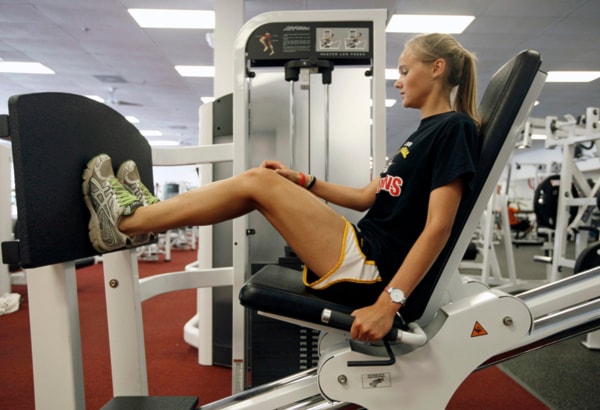Kelsey Reeves knew lots of girl soccer players who had torn their anterior cruciate ligament. But she didn’t think she had injured her own ACL as she lay on the ground in pain during a high school game last spring. There was no contact, just one misstep.
But Reeves’ injury was typical of most ACL injuries. About 70 to 80 per cent of ACL injuries come without any contact to the knee, and women are about eight times more likely to injure their ACL than men, according to Darin Padua, an associate professor and director of the Sports Medicine Research Laboratory at the University of North Carolina in Chapel Hill.
The injury is most common in girls’ soccer, volleyball and basketball.
The United States Centers for Disease Control and Prevention’s most recent numbers show that 46,000 females age 19 and younger had experienced an ACL sprain or tear in 2006. More than 30,000 required surgery. Numbers are not kept for contact vs. non-contact-related knee injuries.
Athletes especially dread injuries to the anterior cruciate ligament. The ligament is one of four that helps connect the shin with the thigh and stabilizes the knee. If torn, it can be repaired, usually by taking a tendon from the hamstring or patella, but rehabilitation is painful and long. It may take a year.
Some athletes recover almost completely, but for others, an ACL tear can end their competitive careers. After an ACL tear, an athlete is about eight times more likely to have another injury, either to the injured knee or the healthy one.
But recent research indicates that non-contact ACL injuries can be significantly reduced by identifying athletes who are most susceptible to knee ligament injury and training them to move in a different way.
“We think we can dramatically reduce the number of ACL injuries,” Padua said.
The key to understanding the non-contact injuries, the high re-injury rate and why females are more susceptible than males, Padua believes, is understanding the way people jump, run and move.
Padua and his team at UNC have developed a series of exercises that may dramatically reduce the number of non-contact ACL injuries. This fall, a North Carolina-area soccer league began using his team’s Performance Enhancement and Kinetic Control, or PEAK, system (www.unc.edu/depts/exercise/peak) with about 600 female youth players. The girls will be evaluated over the next few years to see if the program is effective.
The boys’ teams are expected to use PEAK in the spring.
The PEAK program was developed after a five-year study at the U.S. Military, Naval and Air Force academies that included a test to help identify athletes who are at the greatest risk of a non-contact ACL injury.
In the study, the largest of its kind ever conducted, every incoming student was videoed jumping off a block and springing upward. Later, if a student had a non-contact ACL injury, the initial test results were reviewed. Researchers identified similar characteristics in body movement while landing and leaping among many of the injured students.
Additional research at UNC indicates uncontrolled hip motion predisposes an athlete for a non-contact ACL tear. The academy study and others found that girls are more likely to move in a way that could cause the injury.
“What we have found is that injuring your ACL is less about structure than about the way we move,” Padua said. “It is not so much about genetics or bad luck as is it about the way our bodies perform.”
Improper movement applies stresses to the knee.
“The injury can be repaired, but if we don’t address what caused the tear . . . then it will tear again. We need to correct the movement pattern to prevent the injury,” Padua said.
Correcting the way athletes move involves changing neuro-muscular control.
Exercises have been developed to teach athletes a better way to jump, land and run. The younger the athlete, the easier to correct mechanical flaws. But even among teenagers, if the exercises are used consistently for about nine months, studies indicate that athletes can be taught to move more safely.
Their athletic performance improves because they are moving more efficiently.
The PEAK system involves a series of exercises that can replace traditional warm-up exercises at practice.
“When we tell coaches that we believe we have a 10- to 15-minute workout that can to be used as a warm-up instead of jumping jacks . . . and can reduce injuries, coaches are open,” Padua said.
Prevention is a key, he said.
“Most people are born with a perfect ACL. You can’t improve on perfection regardless of how well you recover.”
